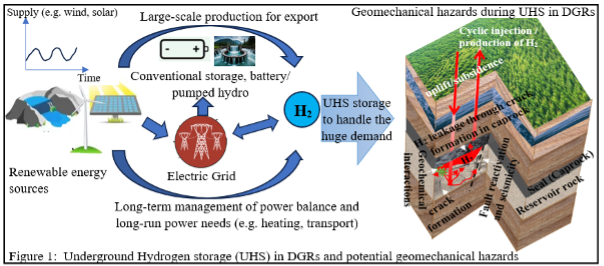Underground Hydrogen Storage in Depleted Hydrocarbon Reservoirs: Uncertainties in Reservoir Integrity
Underground hydrogen storage (UHS) has recently been attracting the attention of global scientists as an effective solution for the required large-scale hydrogen storage for the future of global renewable energy. Depleted gas reservoirs (DGR) have been particularly identified as an economical UHS option due to the readily available infrastructure and already explored and known geology. Despite the many advantages associated with UHS in DGRs, uncertainties in geomechanical stability have been an issue in the large-scale development of the process globally. The microbiological reactions, particularly the Acetogenesis reaction, occur during the UHS in DGRs, causing rock mineral dissolution/precipitation. This can alter the rock structure and mechanical characteristics, causing potential crack formation, weakening, and large-scale geomechanical hazards. Further, these reactions can cause degradation of the wellbore cement, forming micro-annuli and potential hydrogen leakage. This presentation is based on the research findings of the University of Melbourne’s Rock Mechanics group.
- How does the reservoir rock and its sealant’s structure/composition change during hydrogen storage?
- How do these structural/compositional changes degrade the reservoir rock and caprock?
- How do those geochemical interactions impact the wellbore's cement sheath and reservoir rock bonding, potentially causing major leakage paths?


